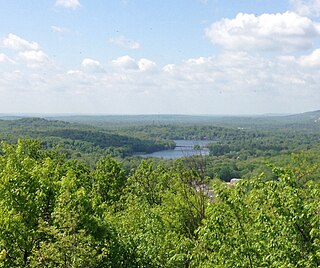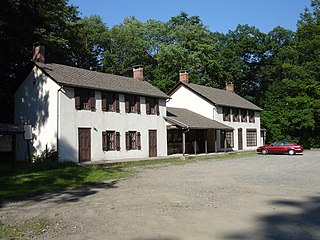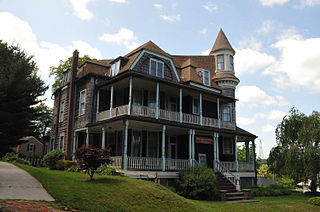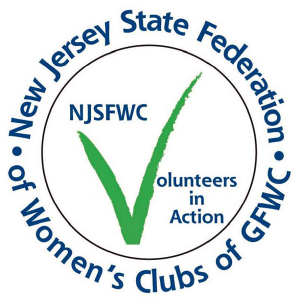Related Research Articles

Sussex County is the northernmost county in the U.S. state of New Jersey. Its county seat is Newton. It is part of the New York metropolitan area and is part of New Jersey's Skylands Region. As of the 2020 census, the county was the state's 17th-most-populous county, with a population of 144,221, a decrease of 5,044 (−3.4%) from the 2010 census count of 149,265, which in turn reflected an increase of 5,099 (+3.5%) over the 144,166 persons at the 2000 census. Based on 2020 census data, Vernon Township was the county's largest in both population and area, with a population of 22,358 and covering an area of 70.59 square miles (182.8 km2). The county is part of the North Jersey region.

Highlands is a borough in northern Monmouth County, in the U.S. state of New Jersey. An historic waterfront community located on the Raritan Bay within the Raritan Valley region, this scenic borough is a commuter town of New York City in the New York metropolitan area. As of the 2020 United States census, the borough's population was 4,621, a decrease of 384 (−7.7%) from the 2010 census count of 5,005, which in turn reflected a decline of 92 (−1.8%) from the 5,097 counted in the 2000 census. The eastern part of the town is on a high bluff that overlooks Sandy Hook Bay, the entrance to New York Harbor, and the Atlantic Ocean, from which the borough derives its name. Atop this bluff are the Navesink Twin Lights.

Pompton Lakes is a borough in Passaic County, in the U.S. state of New Jersey. As of the 2020 United States census, the borough's population was 11,127, an increase of 30 (+0.3%) from the 2010 census count of 11,097, which in turn reflected an increase of 457 (+4.3%) from the 10,640 counted in the 2000 census.

Ringwood is a borough in Passaic County, in the U.S. state of New Jersey. As of the 2020 United States census, the borough's population was 11,735, a decrease of 493 (−4.0%) from the 2010 census count of 12,228, which in turn reflected a decrease of 168 (−1.4%) from the 12,396 counted in the 2000 census.

West Milford is a township in Passaic County, in the U.S. state of New Jersey. As of the 2020 United States census, the township's population was 24,862, a decrease of 988 (−3.8%) from the 2010 census count of 25,850, which in turn reflected a decline of 560 (−2.1%) from the 26,410 counted in the 2000 census. It is the largest in the county by total area, covering 80.32 square miles (208.0 km2) and more than 40% of the county.

Atlantic Highlands is a borough in Monmouth County in the U.S. state of New Jersey, in the Bayshore Region. As of the 2020 United States census, the borough's population was 4,414, an increase of 29 (+0.7%) from the 2010 census count of 4,385, which in turn reflected a decline of 320 (−6.8%) from the 4,705 in the 2000 census.

Hudson Highlands State Park is a non-contiguous state park in the U.S. state of New York, located on the east side of the Hudson River. The park runs from Peekskill in Westchester County, through Putnam County, to Beacon in Dutchess County, in the eastern section of the Hudson Highlands.

The Pennsylvania Highlands region is a section of the Appalachian Mountains located in Eastern Pennsylvania frequently cited as a candidate for extensive ecological preservation.

The New York – New Jersey Trail Conference (NYNJTC) is a volunteer-based federation of approximately 10,000 individual members and about 100 member organizations. The conference coordinates the maintenance of 2,000 miles of foot trails around the New York metropolitan area, from the Delaware Water Gap, north to beyond the Catskill Mountains, including the Appalachian Trail through New York and New Jersey. It also works to protect open space and publishes books and trail maps. The organization's headquarters are at 600 Ramapo Valley Road, Mahwah, New Jersey.
Sterling Forest State Park is a 21,938-acre (88.78 km2) state park located in the Ramapo Mountains in Orange County, New York. Established in 1998, it is among the larger additions to the New York state park system in the last 50 years.
The Highlands Water Protection and Planning Act is a 2004 New Jersey law aimed at protecting the Highlands region of northwest New Jersey by regulating development within the region under the supervision of the New Jersey Highlands Water Protection and Planning Council, under the New Jersey Department of Environmental Protection. The Highlands region covers 859,000 acres (3,480 km2), nearly one-ninth of the state, and is home to 880,000 residents. The area is primarily in Warren, Morris, Hunterdon, Passaic, and Sussex counties, while also reaching into parts of Bergen and Somerset counties. The act is intended to preserve both large volumes of New Jersey's fresh water sources for 5.4 million residents and the biodiversity in the area, in the face of increasing development in the exurbs of New York City. The act was signed into law on August 10, 2004, by Governor of New Jersey James McGreevey.
The Great Swamp Watershed Association is a member-based, non-profit, 501(c)(3) conservation organization dedicated to preserving and protecting water and natural areas. Their programs serve all who live, work, or play in the Great Swamp watershed in Morris County, New Jersey. For over 40 years the association has been acting on behalf of local communities to ensure that water is safe and pure and open space is protected.
The Waterfront Alliance or Metropolitan Waterfront Alliance (MWA) is a nonprofit organization that works to influence the development and use of the waterfront, shoreline, and connected upland areas of the Port of New York and New Jersey in northern New Jersey and New York City as well as other areas of the New York–New Jersey Harbor Estuary.
Buckberg mountain is a hill above the Hudson River that played a role in American Revolutionary War strategy concerning the Hudson Highlands.
The Woodlawn Preserve is a patch of the Albany Pine Bush in the Woodlawn neighborhood of the city of Schenectady, New York. It is the only remaining example of this rare ecosystem in that area, a combination of swamp, wetlands, water bodies, and dune vegetation, and one of the most biologically diverse parcels in Schenectady County.

The New York – New Jersey Highlands is a geological formation composed primarily of Precambrian igneous and metamorphic rock running from the Delaware River near Musconetcong Mountain, northeast through the Skylands Region of New Jersey along the Bearfort Ridge and the Ramapo Mountains, Sterling Forest, Harriman and Bear Mountain State Parks in New York, to the Hudson River at Storm King Mountain. The northern region is also known as the Hudson Highlands and the southern as the New Jersey Highlands. A broader definition would extend the region west to Reading, Pennsylvania, and east to the Housatonic River in Connecticut, encompassing the Reading Prong.
Scenic Hudson is a non-profit environmental organization in New York that was founded in 1963 to oppose a hydro-electric power project in New York.

New Jersey State Federation of Women's Clubs (NJSFWC) was founded in 1894 and is currently located in New Brunswick, New Jersey. NJSFWC is the largest volunteer women's service organization in the state of New Jersey and a member of the General Federation of Women's Clubs. There are approximately 8,000 members in 200 clubs located throughout New Jersey. They provide opportunities for women with education, leadership training, and community service through participation in local clubs. In 1918, the NJSFWC founded the New Jersey College for Women, and offers scholarships to Douglass students.
Doctors for Cannabis Regulation (DFCR) is a 501(c)(3) non-profit organization which serves as a global voice for physicians and health professionals who support cannabis legalization and science-based regulation in the United States and abroad. DFCR promotes public education, global research, and advocacy to support legislative changes necessary for improved public health, social justice & consumer protections. DFCR was founded on September 30, 2015, by David L. Nathan.

Environmental law in New Jersey consists of legislative and regulatory efforts to protect the natural environment in the State of New Jersey. Such efforts include laws and regulations to reduce air and water pollution, regulate the purity of drinking water, remediate contaminated sites, and preserve lands from development, particularly in the Pinelands of southern New Jersey and the Highlands in the north of the state. Environmental laws in New Jersey are enforced primarily by the New Jersey Department of Environmental Protection (NJDEP).
References
- ↑ Holusha, John (2008-08-08). "Plan for Highlands Has Lots of Critics". The New York Times. Retrieved 2020-10-21.
- ↑ Capuzzo, Jill P. (2012-08-12). "Mapping Future Growth". The New York Times. Retrieved 2020-10-25.
- ↑ Bloom, Susan (2015-01-08). "N.J. Highlands Coalition helps champion local land preservation". The Daily Record. Retrieved 2020-10-21.